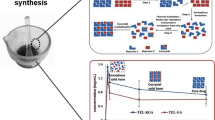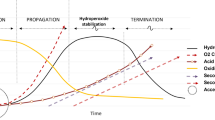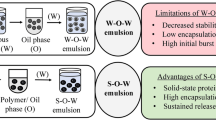Abstract
Astaxanthin (AXT) is a carotenoid which gained a lot of importance as a nutritional ingredient in Nutraceuticals and as a food additive. However this bioactive failed to gather absolute significance due to poor aqueous solubility. This study explores the improved dissolution rate of AXT by its complexation with methyl betacyclodextrin (M-βCD) using spray drying technique which is very much scalable and accepted in industry. The experimental methodology undertaken proved that at 1.0 molar concentration of M-βCD, the solubility of AXT was 0.012 mM, representing a 54-fold enhancement over baseline solubility (<0.025 µg/mL). A ten fold increase in the dissolution rate was observed within 45 min in case of spray dried complex of AXT with M-βCD as compared to plain AXT. HepG2 cell line study proved that the bio accessibility of AXT increased when complexed with M-βCD using spray drying technique. Also, these complexes were further characterized by FTIR, UV, DSC, 1H NMR, XRD and molecular modeling analysis. The results confirmed that the hexatomic side rings of the AXT molecule were partly incorporated into the M-βCD cavity. This study provides the basis for the development of soluble and bioavailable oral formulations of AXT using spray drying technology for cyclodextrin complexation.










Similar content being viewed by others
References
Fiedor, J., Fiedor, L., Haessner, R., Scheer, H.: Cyclic endoperoxides of β-carotene, potential pro-oxidants, as products of chemical quenching of singlet oxygen. Biochim. Biophys. Acta. 1709, 1–4 (2005)
Edge, R., Truscott, T.G.: Properties of carotenoid radicals and excited states and their potential role in biological systems. In: Landrum, J.T. (ed.) Carotenoids: Physical, Chemical, and Biological Functions and Properties, pp. 283–308. CRC Press, Boca Raton (2010)
Vetkovic, D., Fiedor, L., Fiedor, J., Wisniewska-Becker, A., Markovic, D.: Molecular base for carotenoids antioxidant activity in model and biological systems: the health-related effects. In: Yamaguchi, M. (ed.) Carotenoids: Food Sources. Production and Health Benefits, pp. 93–126. Nova Science Publishers, Hauppauge (2013)
Block, G., Patterson, B., Subar, A.: Fruit, vegetables, and cancer prevention: a review of the epidemiological evidence. Nutr. Cancer 18, 1–29 (1992)
Naguib, Y.M.: Antioxidant activities of astaxanthin and related carotenoids. J. Agric. Food Chem. 48, 1150–1154 (2000)
Ambati, R.R., Siew Moi, P., Ravi, S., Aswathanarayana, R.G.: Astaxanthin: sources, extraction, stability, biological activities and its commercial applications—a review. Marine Drugs 12(1), 128–152 (2014)
Tanaka, T., Morishita, Y., Suzui, M., Kojima, T., Okumura, A., Mori, H.: Chemoprevention of mouse urinary bladder carcinogenesis by the naturally occurring carotenoid astaxanthin. Carcinogenesis 15(1), 15–19 (1994)
Savoure, N., Briand, G., Amory-Touz, M.C., Combre, A., Maudet, M., Nicol, M.: Vitamin A status and metabolism of cutaneous polyamines in the hairless mouse after UV irradiation: action of beta-carotene and astaxanthin. Int. J. Vitam. Nutr. Res. 65(2), 79–86 (1995)
Olson, J.A.: Absorption, transport, and metabolism of carotenoids delivery systems in humans. Pure Appl. Chem. 66, 1011–1116 (1994)
Parker, R.S.: Absorption, metabolism, and transport of carotenoids. FASEB J. 10, 542–551 (1996)
Nakao, M., Sumida, M., Katano, K., Fukami, H.: Enzymatic synthesis of astaxanthin n-octanoicacidesters. J. Oleo Sci. 57(7), 371–374 (2008)
Yuan, C., Jin, Z., Xu, X., Zhuang, H., Shen, W.: Preparation and stability of the inclusion complex of astaxanthin with hydroxypropyl-β-cyclodextrin. Food Chem. 109(2), 264–268 (2008)
Anarjan, N., Tan, C.P.: Developing a three component stabilizer system for producing astaxanthin nanodispersions. Food Hydrocoll. 30(1), 437–447 (2013)
Bustos-Garza, C., Yanez-Fernandez, J., Barragan-Huerta, B.E.: Thermal and pH stability of spray-dried encapsulated astaxanthin oleoresin from Haematococcus pluvialis using several encapsulation wall materials. Food Res. Int. 54(1), 641–649 (2013)
Peng, C.H., Chang, C.H., Peng, R.Y., Chyau, C.C.: Improved membrane transport of astaxanthin by liposomal encapsulation. Eur. J. Pharm. Biopharm. 75(2), 154–161 (2010)
Ribeiro, H.S., Rico, L.G., Badolato, G.G., Schubert, H.: Production of O/W emulsions containing astaxanthin by repeated premix membrane emulsification. J. Food Sci. 70(2), 117–123 (2005)
Dupuy, N., Barbry, D., Bria, M., Vrielynck, M., Kister, J.: 1H NMR study of inclusion compounds of phenylurea derivatives in β-cyclodextrin. Spectrochim. Acta A. 61, 1051–1057 (2005)
Chen, X., Chen, R., Guo, Z., Li, C., Li, P.: The preparation and stability of the inclusion complex of astaxanthin with β-cyclodextrin. Food Chem. 101(4), 1580–1584 (2007)
Chao, Y., Zhengyu, J., Xueming, X.: Inclusion complex of astaxanthin with hydroxypropyl-β-cyclodextrin: UV, FTIR, 1H NMR and molecular modeling studies. Carbohydr. Polym. 89, 492–496 (2012)
Lockwood, S., O’Malley, S., Mosher, G.: Improved Aqueous Solubility of Crystalline Astaxanthin (3,30-dihydroxy-b, b-carotene-4,40-dione) by Captisol (Sulfobutyl Ether β-Cyclodextrin). J. Pharm. Sci. 92(4), 922–926 (2003)
Pfitzner, I., Francz, P., Biesalski, H.: Carotenoid:methyl-β-cyclodextrin formulations: An improved method for supplementation of cultured cells. Biochimica Biophysica Acta (BBA): General Sub. 1474(2), 163–168 (2000)
Hedges, A.: Industrial applications of cyclodextrins. Chem. Rev. 98, 2035–2044 (1998)
Nalawade, P., Dand, N., Aware, B., Kadam, V., Hirlekar, R.: Solid state characterization of Inclusion complexes of valsartan with methyl β-cylodextrin. J. Incl. Phenom. Macro. Chem. 65(3–4), 377–383 (2009)
Figueiras, A., Carvalho, R., Ribeiro, L., Torres-Labandeira, J., Veiga, F.: Solid-state characterization and dissolution profiles of the inclusion complexes of omeprazole with native and chemically modified beta-cyclodextrin. Eur. J. Pharm. Biopharm. 67, 531–539 (2007)
Tichy, E., Zabka, M., Gardavska, K., Halenarova, A., Scheerova, Z., Potuckova, M.: Dissolution and spectrophotometric determination of astaxanthin in aqueous solutions. Pharmazie 66(8), 560–563 (2011)
Skehan, P., Storeng, R., Scudiero, D., Monks, A., McMahon, J., Vistica, D., Warren, J.T., Bokesch, H., Kenney, S., Boyd, M.R.: New colorimetric cytotoxicity assay for anticancer-drug screening. J. Natl Cancer Inst. 82(13), 1107–1112 (1990)
Vichai, V., Kirtikara, K.: Sulforhodamine B colorimetric assay for cytotoxicity screening. Nat. Protoc. 1, 1112–1116 (2006)
Villano, D., Fernandez-Pachon, M.S., Moya, M.L., Troncoso, A.M., Garcia-Parrilla, M.C.: Radical scavenging ability of polyphenolic compounds towards DPPH free radical. Talanta 71, 230–235 (2007)
Wen, X., Liu, Z., Zhu, T.: Mass spectrometry and molecular modeling studies on the inclusion complexes between α,β-cyclodextrins and simvastatin. Chem. Phys. Lett. 405, 114–117 (2005)
Verma, R., Garg, S.: Compatibility studies between isosorbide mononitrate and selected excipients used in the development of extended release formulations. J. Pharmaceut. Biomed. 35, 449–458 (2004)
Guo, J., Jones, M., Ulrich, J.: Polymorphism of 3,3′-dihydroxy-β, β-carotene-4,4′-dione (Astaxanthin). Chem. Eng. Res. Design. 88, 1648–1652 (2010)
Ribeiro, A., Figueiras, A., Santos, D., Veiga, F.: Preparation and solid-state characterization of inclusion complexes formed between miconazole and methyl-beta-cyclodextrin. AAPS Pharm Sci. Tech. 9(4), 1102–1109 (2008)
Singh, R., Bharti, N., Madan, J., Hiremath, S.N.: Characterization of cyclodextrin inclusion complexes—a review. J. Pharm. Sci. Tech. 2(3), 171–183 (2010)
Cheeveewattanagul, N., Jirasripongpun, K., Jirakanjanakit, N., Wattanakaroon, W.: Carrier design for astaxanthin delivery. Adv. Mat. Res. 93–94, 202–205 (2010)
Acknowledgments
OmniActive Health Technologies Ltd. (India) are greatly acknowledged for research support and ACTREC (Navi Mumbai) for carrying out cell line study. The authors are also thankful to Rouquette Corporation (Lestrem, France) for providing the free sample of KLEPTOSE® CRYSMEB.
Conflict of interest
The authors declare no conflicts of interest.
Author information
Authors and Affiliations
Corresponding author
Rights and permissions
About this article
Cite this article
Nalawade, P., Gajjar, A. Assessment of in-vitro bio accessibility and characterization of spray dried complex of astaxanthin with methylated betacyclodextrin. J Incl Phenom Macrocycl Chem 83, 63–75 (2015). https://doi.org/10.1007/s10847-015-0541-8
Received:
Accepted:
Published:
Issue Date:
DOI: https://doi.org/10.1007/s10847-015-0541-8




